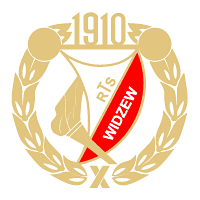Romania may have been down on the international scale, but the domestic championship was still lively and fairly competitive, most teams quite equal. 8 points separated the 16th from the 4th at the end – and the 4th was Steaua (Bucharest)! Two outsiders and 3 teams competing for the title. Not bad… depending at which end of the table one was. FCM Galati finished last with 18 points, FC Baia Mare – 17th with 26 points, and Politehnica (Iasi) – 16th with 30 points. Those were the relegated. Politehnica may have run out of luck, but more or less all three were usual candidates for relegation. Three teams sunk low and were happy to survive – all with 32 points and much better past than present: Progresul (Bucharest) – 15th, Universitatea (Cluj) – 14th, and ASA (Tirgu Mures) – 14th.
In the middle of the table were clubs normally expected to be just there:
Jiul (Petrosani) finished 10th.
Unlikely teams played very well – Corvinul (Hunedoara) was 6th, ahead of Olt (Scornicesti) only on better goal-difference.
 The outlandish project, what Olt (Scornicesti) was, was doing very well in the still new for them top league: 7th. Standing from left: M. Lică, P. Petre, Al. Nicolae, Ghe . Soarece, M. Leac, Ghe. Iamandi, L. Martinescu, A. Mincu.
The outlandish project, what Olt (Scornicesti) was, was doing very well in the still new for them top league: 7th. Standing from left: M. Lică, P. Petre, Al. Nicolae, Ghe . Soarece, M. Leac, Ghe. Iamandi, L. Martinescu, A. Mincu.
First row: Constantin Prepeliţă, I. Ciocioană. V. Piţurcă, M. Nedea, I. Anghel, Constantin Mincu, S. Iovanescu, Constantin Ardeleanu – coach.
The birthplace of the Romanian dictator enlarged itself to a city – or something like that – and to a strong club. Such is the ‘spontaneous love of the people’, but Olt, no matter how much ‘help’ they got, were not in a position of competing with the powerful clubs from Bucharest. Not for long anyway. Steaua had a weak season, finishing 4th, but outside the championship race: such season’s were perilous to Olt, for they were merely provincial, when compared to Steaua (the Army) and Dinamo (the Police) and if there were good players in Olt, they would quickly move to Bucharest – there was pictured above: Victor Piturca. Soon the world was going to here of him, but not as Olt’s player.
The race for the title was between Dinamo (Bucharest), Arges (Pitesti), and Universitatea (Craiova). Familiar picture – Dinamo, like Steaua, even when not at its best was still a favourite. The other two were actually the best Romanian clubs of the 1970s and so far running well.
 With 42 points Arges finished 3rd – actually, a very good performance, given the diminishing powers of the team.
With 42 points Arges finished 3rd – actually, a very good performance, given the diminishing powers of the team.
Dinamo took the silver medals, always a disappointment for them, but wish and fact are different: Dinamo had no really strong team for about 10 years.
It may have been a race between equals, but Universitatea was arguably the best Romanian club at the time and won the title with 21 wins, 4 ties, 9 losses, 72-33 goal-difference, and 46 points – outrunning Dinamo by 3 points.
 Standing from left: Ion Oblemenco (coach), Irimescu, Ştefănescu, Beldeanu, Boldici, Lung, Ciupitu, Cămătaru, Tilihoi, C.Oţet (assistant coach).
Standing from left: Ion Oblemenco (coach), Irimescu, Ştefănescu, Beldeanu, Boldici, Lung, Ciupitu, Cămătaru, Tilihoi, C.Oţet (assistant coach).
First row: Donose, Cârţu, Geolgău, Crişan, Balaci, Ungureanu, Negrilă, Purima, Ţicleanu.
One more title – nothing surprising: Universitatea was ruling Romanian football since the early 1970s. Here are the players practically defining Romanian football at the first half of the 1980s: Camataru, Lung, Stefanescu, Balaci, Negrila, Ungureanu, Ticleanu – with them Romania became familiar name again, but it was too early yet. Perhaps the best indication for good future was the champion’s coach – just a few years ago Ion Oblemenco was the star of the team bringing the initial success. Now he was young and not very experienced coach, but equally talented – a local man, who transformed quickly from a player to a coach.














































